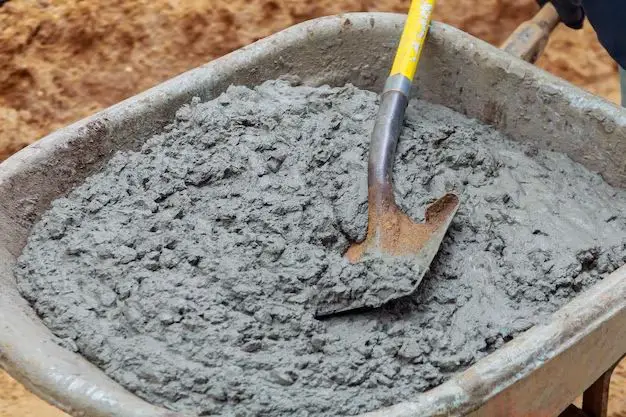When building a fire pit, using the right cement mix is crucial for safety and durability. The cement mix needs to be able to withstand high levels of heat without cracking or crumbling. There are a few key factors to consider when choosing the best cement mix for a fire pit:
Page Contents
Heat Resistance
You’ll want a cement mix specifically designed for high heat applications. Standard concrete can deteriorate quickly when exposed to the extreme heat of an open fire. Look for mixes containing refractory cement, which is made to withstand temperatures above 2000°F.
Strength
The cement around the fire pit needs to be strong enough to hold the weight of the fire brick or other lining materials used in the pit. Aim for concrete mix with a high compressive strength rating, somewhere in the range of 5000 psi or above.
Aggregate Material
The aggregates used in the concrete mix should be resistant to thermal shock to prevent cracking. Good options include granite, quartz, and limestone aggregates. River rock and pea gravel are not ideal for fire pit concrete.
Density
A dense concrete mix without a lot of air pockets and voids will hold up better to heating and cooling cycles. Look for mixes labelled high density or low permeability.
Curing Time
Allow the concrete adequate curing time before building your first fire. Most standard concrete mixes require about 28 days to fully cure. Quick setting mixes may cure in as little as 24-48 hours but the strength may be lower.
Recommended Mixes
Here are some specific cement mixes that work well for fire pits:
- Quikrete High Heat Fire Pit Mix
- Sakrete High-Heat Mortar Mix
- Rutland Castable Refractory Cement
- Dry Mix Refractory Cement with Fireclay
Safety Tips
When working with concrete, be sure to:
- Wear protective eyewear, gloves, and a dust mask
- Follow all safety directions from the product manufacturer
- Prevent skin exposure to wet concrete which can cause burns
Check the forecast and pour concrete on a dry day without rain expected for the full curing period. Cover the curing concrete to protect it from rain or heavy dew.
Dimensions
For safety and durability, the concrete around the fire pit should be at least 4-6 inches thick. The pit itself should have interior dimensions 3-5 feet across, to allow an ample fire without overheating the surrounding cement.
Construction Tips
- Dig the fire pit cavity at least 6 inches deeper than the final intended depth. Add 6 inches of crushed gravel, then cement on top.
- Make the surface area at least 18-24 inches wider than the fire brick lining to prevent heat damage to the edges.
- Use rebar or wire mesh for reinforcement in the concrete.
- After cure, test for cracks by building a small fire before lining with fire brick.
Lining Materials
Line the interior of the pit with fire bricks or heat-resistant materials like fire glass pebbles. This protects the concrete from direct exposure to flames and allows for a removable/replaceable lining.
Conclusion
The best cement mix for a durable, safe fire pit is a high density blend of refractory and Portland cements with heat-resistant aggregates. Allow plenty of time for proper curing before use. With the right concrete and safety precautions, you can enjoy your custom fire pit for years to come.
